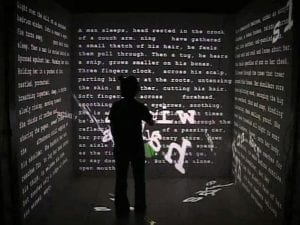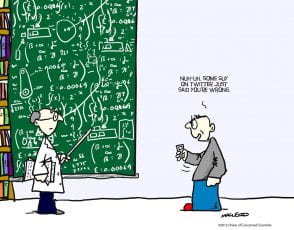Critical Reflection of Digital Literature Experiences

It is fair to say I was filled with self-assurance when beginning my digital literature experience this semester. I was confident that I had a solid understanding of what a digital text was and its applied benefits in the field of education. I began perusing links and suggestions before discovering a wealth of various forms of digital literature, some that I struggled to comprehend and others that blew me away with their creativity and coding. It appears I had drastically underestimated my knowledge. Lamb’s (2011) definition of what constitutes a book assisted in my development, with a book being defined as ‘a published collection of related pages or screens’. With that definition and contemplating Walsh’s (2013) features of digital narratives, especially his point on ‘scrolling or ‘mouseover’ effects, I began to grasp how much scope was possible.
What stood out dramatically was the range in the quality of these digital texts. Students need to be engaged with their reading material if the quality of the writing is not evident; it will not matter if the version is digital with all the bells and whistles if the content is substandard. I love to read hard copy novels, the scent of the paper, the sound of turning pages, holding something substantial in my hands. That said, however, I read mostly in digital. Digital literature usually is cheaper, easier to access and are convenient to carry around. I like highlighting and accessing hyperlinks, and it is practical to jump from what is being read to researching words or definitions in another screen. I cannot imagine giving a hard copy away for good, but both have their place.
The cognitive research conducted by Gardner (as cited in Lane, n.d.) suggests that students have various ways of learning, remembering and understanding, so need to be taught in ways that support these differences. These multiple intelligences align well with the benefits of digital literature. As stated by Neumann, Finger and Neumann (2016), digital texts can stimulate visual, auditory, kinaesthetic and tactile senses. At the same time, Lamb (2011) explains that eBooks benefit children with learning difficulties and English as second language learners. Digital text provides learners with the ability to hear words and sentences pronounced out loud, read definitions, use digital sticky notes to annotate that display inferencing and analysis and as suggested by Scharaldi (2020) even change the font of the text to one such as Open Dyslexic typeface.
While discovering the diverse range of digital literature available, I came across a number that amazed me for their beauty, depth of story and integrated technology. The one that surprised me the most was Core Values, a digital poem written by Benjamin Laird (2017). This poem surrounds you, incorporates you into it and draws you into another world. The words to this poem scroll across your vision, ensuring that your gaze follows its movements. However, this piece raised in me a concern. It was hard to read; for all its attraction, it was challenging to follow. I realised that Core Values had a readability issue. Bouchardon and Heckman (2012) believe that digital literature can present several problems, including readability, they suggest that hypertextual navigation contributes to disorientation and compromises the reading. This is significant and should be kept in mind by educators, a poem such as Core Values could be used in a senior classroom as a comparison piece. Still, the difficulty in reading should be highlighted as a potential issue.
Ascent from Akeron does not have a readability this issue. There is an ease to reading it that differs substantially to Core Values. This interactive graphic novel, written by William Maher releases a frame only when clicked or mouseover’ed by the reader (Maher, 2019). This feature ensures that the reader is in complete control of the events unfolding and that they can read at a pace that suits them. Applications for this piece in the classroom are vast. I could easily see a unit of work built around this graphic novel for use in a year 9 or 10 classes. An introduction to graphic novel features and metalanguage would begin the unit before reading the four episodes from Ascent from Akeron. This would start a building of knowledge that would include annotating frames, discussing literary devices and analysis of language before moving onto a creative writing piece where the students would write a fifth episode in the series. A unit such as this could assist the students in achieving outcomes for the Victorian Curriculum F-10 in year 9 English in VCELA429, VCELT447, VCELT448 and VCELY450 (VCAA, 2020d).
All I know at the moment is the world of digital literature is evolving and growing rapidly, and if I want to gain back my self-assurance on all things digital, I had better keep searching and reading.
References
Heckman, D. & Bourchardon, S. (2012). Digital manipulability and digital literature. Electronic Book Review. http://www.electronicbookreview.com/thread/electropoetics/heuristic
Lamb, A. (2011). Reading redefined for a transmedia universe. Learning and Leading with Technology, 39(3), 12-17. Retrieved from http://ezproxy.csu.edu.au/login?url=http://search.ebscohost.com/login.aspx?direct=true&db=ehh&AN=67371172&site=ehost-live
Laird, B. (2017). Core values [Digital literature]. https://poetry.codetext.net/core-values/
Lane, C. (n.d.). The distance learning technology resource guide. https://www.tecweb.org/styles/gardner.html
Maher, W. (Author), & Garcia, G. (Illustrator). (2019). Ascent from Akeron [Interactive graphic novel]. https://www.ascentfromakeron.com/
Neumann, M., Finger, G., & Neumann, D. (2016). A conceptual framework for emergent digital literacy. Early Childhood Education Journal, 45(4), 471-479. doi: 10.1007/s10643-016-0792-z
Victorian Curriculum and Assessment Authority. (2020d). Victorian Curriculum: Foundation-10; English: Level 9. https://victoriancurriculum.vcaa.vic.edu.au/english/english/curriculum/f-10?layout=1&y=9&s=R&s=W&s=SL
Walsh, M. (2013). Literature in a digital environment (Ch. 13). In L. McDonald (Ed.), A literature companion for teachers. Marrickville, NSW: Primary English Teaching Association Australia (PETAA). https://doms.csu.edu.au/csu/file/863c5c8d-9f3f-439f-a7e3-2c2c67ddbfa8/1/ALiteratureCompanionforTeachers.pdf












